Advanced equipment in my private research lab

It might be the most advanced private, non-commercial gem research lab in the world.
I recently purchased most of the major research instruments owned by the late AGTA Gemological Testing Center in New York. In conjunction with the electron microprobe and the Raman microspectrometer it places the new lab in the position to potentially solve just about all of the gemological separation issues that it is possible to currently solve. The equipment is advanced - the operator, not so much.
The degree of study and experimentation necessary to use all of this equipment to anywhere near its capacity is something that will be time consuming and arduous, to say nothing of the necessity of developing several thorough databases in order to give the results meaning and statistical significance. But, as they say, if it were easy, everyone would be doing it. Gemological science is a lifelong study and the tools to do obscure and some original research are just part of the fun.
Here’s what is currently in the lab in the manner of research equipment:
ARL-SEMQ Electron Microprobe
The microprobe purchase turned out to be much more demanding then I had originally thought. The installation and required support equipment expense far exceeded my somewhat trivial understanding of what was required for the care and feeding of this beast. Nothing in my history of operating probes prepared me for what it was like to own and maintain one. And, while the unit is fully functional in its current condition much of the analysis hardware is quite old and the main computer is a relic. So, a thorough upgrade of the WDS and EDS components and analytical software will bring the microprobe up to a state-of-the-art machine in many respects. But it is an expensive and time consuming proposition that will likely not be complete until the end of the year.
The electron microprobe has been the foundation for contemporary mineralogy and petrology and the equipment has remarkable capabilities. To my knowledge, no gem lab in the world owns one and I believe I am the world’s only private, non-commercial owner.
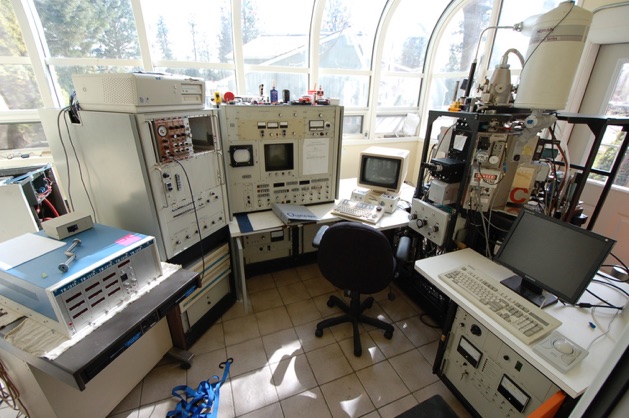
Renishaw Raman Microscope
The Raman microscope somehow offends my sensibilities as a classically trained mineralogist that understands that a gem or mineral is defined by both its chemical composition and its atomic structure. The Raman microscope gives you neither but is capable of identifying most chemical compounds, organic and inorganic. This is an instrument that will, based on spectral matching, unequivocally identify most gems and minerals except those where the solid solution effects and arbitrary boundaries make determinations difficult. It’s a powerful tool for quick gem I.D. confirmation and for determining the identification of near surface inclusions. This Renishaw unit is an expensive confocal type giving excellent control over the analyzed area and it is far superior to the non-confocal units that are less expensive.
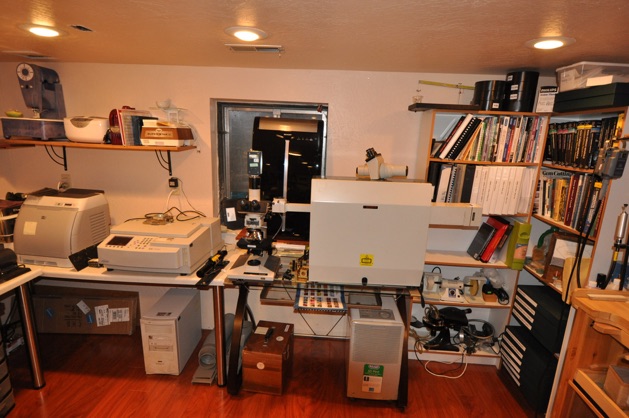
Shimadzu EDS-720 Energy Dispersive X-ray Spectrometer
The EDXRF system was built in late 2008 and represents a state-of-the-art EDS system with a cryogenic detector. The instrument provides quick and accurate chemical composition data on solids, powders and liquids although for our use only solids are used. A 3mm square sample is sufficient and both rough and cut gems as well as minerals can be analyzed. The lack of sample prep and the quick analysis time are the advantages over EPMA. The bulk chemistry accuracy is better with the microprobe but the limits of detection for trace elements is quite good.
This instrument is great for I.D. confirmation and for getting a chemical “fingerprint” on different types of gems that can often determine their origin or help separate natural materials from difficult synthetics.

Zeiss UV-VIS-NIR Spectrophotmeter
The Zeiss set-up is versatile with its own light source and analyzer in the same fiber optic probe. The resolution is excellent and the unit is quite compact. The AGTA lab used to transport this to Tucson and other venues to provide on the spot analysis.

Laser Induced Breakdown Spectroscopy
Used primarily to detect beryllium diffusion treated corundum this instrument uses a high powered UV laser to ablate a very small amount of the sample and to create a 50,000°C plasma cloud. A series of Ocean Optics spectrometers detect the elements. For Be the limit of detection is about 3 ppm.
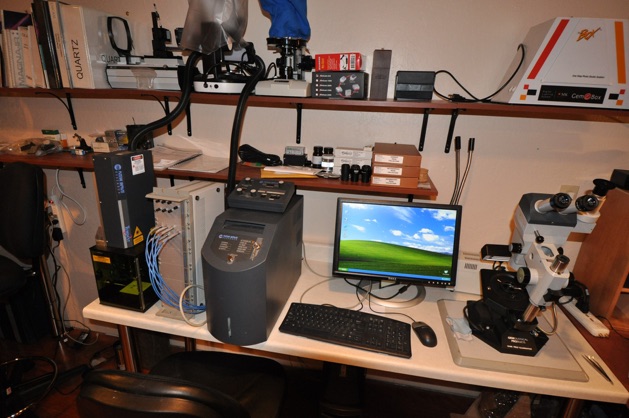
Nicolet Magna IR 560
This is Fourier Transform Infrared Spectrometer that has many uses, among them separating natural from synthetic quartz, diamond analysis, emerald filler determinations, etc. It is often used with the subject diamonds cooled to liquid nitrogen temperature.
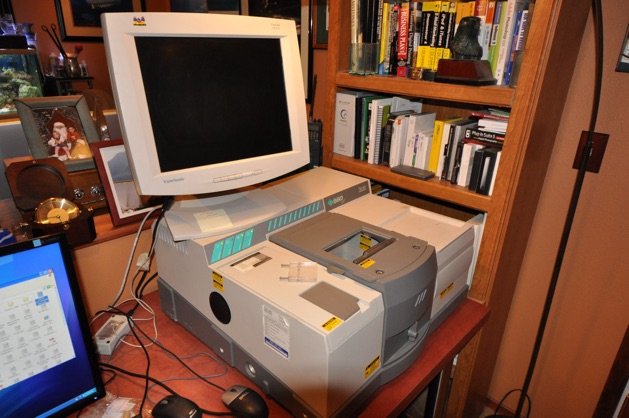
Unicam UV500 UV-VIS-NIR Spectrophotometer
This is a dual beam unit that has largely been supplanted by the Zeiss spectrophotometer.
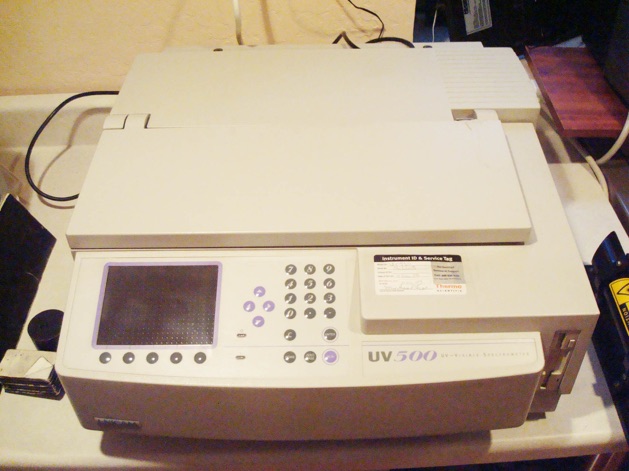
FUTURE UPGRADES
It would be great to add two instruments to the arsenal. First a Rigaku Miniflex II x-ray powder diffractometer for structural information. This appeals more to the crystallographer in me and is only necessary in those rare cases where chemical data is not enough for an I.D.
In addition there is an LA-ICP-MS system in my future. This is an incredibly powerful technique applicable to all elements and has extraordinary trace element levels of detection. This will likely come if I continue with my plans to fund a non-profit gem research institute and to move to a building dedicated to that purpose.
